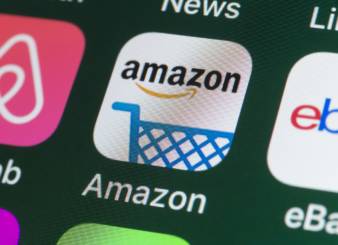‘Business as usual’ has been replaced by ‘adapt and support’ since the outbreak of COVID-19. We are in a rare situation that has affected every country, industry and individual to some extent, so one thing we have felt strongly about at Vertical Advantage is to help people where we can.
Here’s what we’ve done so far to adapt and why we’ve done it.
Proactively helping people who are out of work
Evidently a large chunk of the workforce has been made redundant or found themselves without a job for other reasons linked to the pandemic. Nearly two million people in the UK have applied for universal credit benefits since the beginning of lockdown – that’s six times the normal claimant rate(!).
Having a vast network of FMCG candidates and businesses during a crisis like this, we knew we had to utilise it to do our bit. Not for the sake of additional revenue or expecting something in return, but because it was simply the right thing to do.
Consequently, we have offered to add active job seekers within ecommerce & digital and sales & marketing to open source spreadsheets. These have been shared directly with relevant clients and on LinkedIn.
Click here to access the ecommerce & digital list.
…and here to access the sales & marketing list.
We have also offered candidates the chance to book in time directly into our calendars for them to ask questions, get advice on their job search, or just to have an informal chat about the current job market.
Helpful insights
New working conditions and a shook FMCG and consumer goods market has surfaced questions by candidates and businesses alike, which is why we have posted regular updates on our website and social channels to provide our expertise to share information and provide support.
We’ve taken the pulse on the sector by speaking with clients regularly and outlined what hiring and onboarding has looked like during the pandemic, but also shared articles like how to identify company culture via video call, how to stay engaged with your team and our best bits of advice for current job seekers.
In addition, many businesses in the consumer goods sector have shared interesting market insights with us, which we have proactively shared with our key clients. If you are interested in finding out what these are, please email me on david@vertical-advantage.com.
When we say live jobs, we mean LIVE jobs
Since the early stages of lockdown we have noticed a lot of frustration coming from candidates as they were applying to vacancies online that they came to realise didn’t exist or were in fact put on indefinite hold – something that provided false hope and was a huge time waster. This was and is a big issue and something we didn’t want to contribute to, so the first thing we did when the job market took a downturn was to audit thew jobs we advertised.
You will also see that jobs on our website are advertised differently:
1. Some of our clients are pipelining for hires they want to make in the medium term. These ads include ‘Talent Pipeline’ in their titles for clarity.
2. All other ads are for LIVE jobs that we are currently recruiting for.
What next?
Although the consumer space hasn’t been as hit badly as many others, we recognise that some businesses simply don’t have the budget to use a recruitment agency at the moment. And that’s ok.
We want to continue to help all clients in the industry where we can, whether this means helping you find talent for a particular vacancy, providing advice on the current market, or benchmarking your strategy against others.
Feel free to drop me an email on david@vertical-advantage.com or call me on 07792 544887 if there is anything you’d like to discuss. I’d be delighted to hear from you.




















Recent Comments